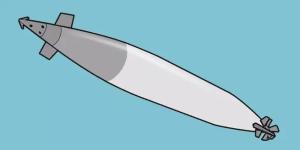Since being able to wield tools, humans have relentlessly hurled weapons at each other, with varying degrees of precision. But only in the last 100 years have we built rockets that can drive themselves.
We’ve spent a century of experimentation in an attempt to create bigger, farther, and more precise bombs. As technology improved, weapons moved from hand-operated torpedoes to bombers to self-contained cruise missiles. These are some of the most important steps.
Louis Brennan designed one of the first guided missiles. The harbors installed these torpedoes to protect the coast, directed at enemy ships and used steel wire to connect two coils on the shore.
Nikola Tesla demoed a model boat more than 1.2m long, controlled by radio waves at an electrical show. According to Tesla’s theory, the technology could lead the way to the development of wireless explosives, but no one applied his design.
Most of the early drone bomber tests ended in accidents because radio control was limited to up/down and left/right maneuvers. Better improvements came after the war, along with better tuned catapults.

During World War II, the Allies called it “flying bombs”.
To control the first cruise missile in combat, German engineers fitted a simple gyro for balance and a compass for guidance. Each time it takes aim, the bomb gauge counts the propeller spinning and disconnects the rudder when the bomb reaches its destination.

This missile was developed by the US Navy.
To counter suicide fighter pilots during World War II, the US Navy began developing guided surface-to-air missiles, but it took six years for the radar-guided Lark to succeed.

This is an alternative to radar missiles that require pilot control.
When an alternative to radar missiles was needed, which required pilot control, the US Navy developed an infrared-guided thermal weapon. The Sidewinder was so accurate and inexpensive that some versions of it are still used by the military to this day.

Invented by General Dynamics company.
General Dynamics Company began developing the Tomahawk in the 1970s. Today’s upgraded versions are navigated by GPS and by combining camera images with maps, all arranged using the built-in computer. Tomahawk.

This is one of the top security inventions of 2017.
LRASM combines both radar and infrared sensors to target ships. An automatic targeting system allows to identify and destroy enemies without human control.

